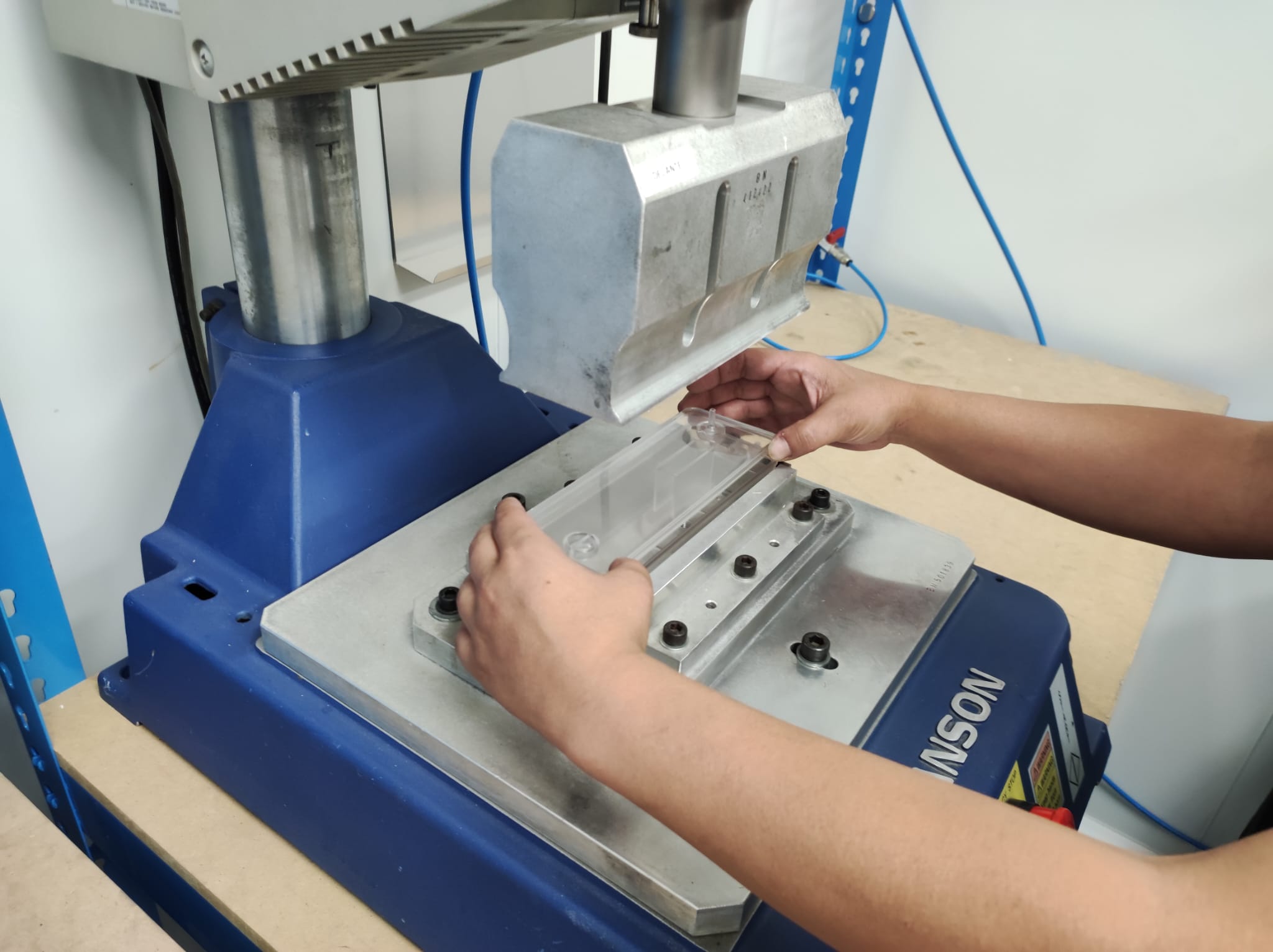Welding is a critical step in any production process: it determines the robustness, precision and even, on exceptional cases, the finish of a part and, therefore, its degree of quality. Although there are different ways of welding thermoplastic materials, at IDELT we are committed to ultrasonic welding as the most efficient way of carrying out this process due to its speed and simplicity and the quality of the finishes of the parts.
Ultrasonic welding is a friction heat process used to fuse thermoplastic parts together. During the process, a high-frequency electrodynamic field is generated at the metal tip which causes a vibration in the plastic material with which it is in contact. This process releases a heat which, thanks to the pressure and once cooled, achieves a solid bond between two components.
To carry out the process, the two plastic parts are brought together, and ultrasound is applied to the joint through the metal tip. Activating the device generates an ultrasonic wavelength in ranges from 20 to 40 kilohertz (kHz) per second to weld the parts together. Higher frequencies reduce vibrations and improve the welding of engineering thermoplastic polymers and reinforced polymers but are also used for small parts and for components that require less material degradation.
As the wavelengths pass through the plastic parts they are transformed into thermal energy due to friction. The process continues until the plastic reaches its melting point and the two parts are welded together. At the moment the process stops, the plastic starts to cool and the joint starts to solidify, while the machine applies pressure to optimise the result. The process is completed when the ultrasonic horn is removed, and the two components have become one piece.
Ultrasonic welding offers several benefits over traditional production methods when it comes to achieving the best finishes:
- It is a quick process, taking only a few seconds in most cases.
- High reachability in complex geometries
- Individualisation of the welding points by means of individual welding heads.
- It can be used for thermoplastic materials as well as for metallic components such as copper, aluminium or contacts on circuit boards.
- Ultrasonic welding is much safer than conventional processes in terms of safety because it eliminates the generation of fumes, smoke, bright UV light and other concerns that can pose safety risks.
- They offer robustness and durability comparable or even superior to welds generated by conventional methods.
- Energy supply can be controlled by digital process control.
- It offers consistent quality parameters.
- It is environmentally friendly.
- The process runs with low energy consumption.
- No solvents or additives are needed.
- The machinery does not need to spend time heating up and does not cause damage to the parts when it stops working.
In the case of IDELT, these advantages allow us to be at the forefront both in the production and prototyping of plastic and metal parts in order to adapt to the needs of our customers, regardless of the production sector to which they belong.

